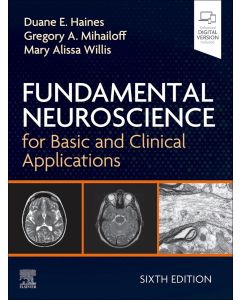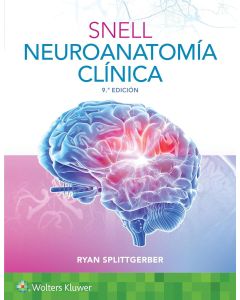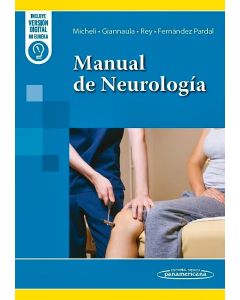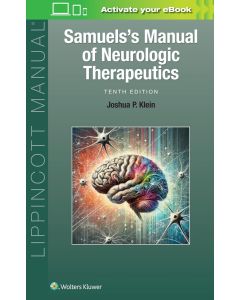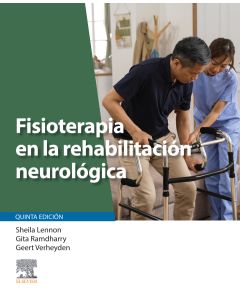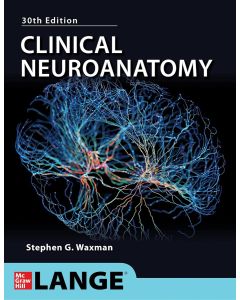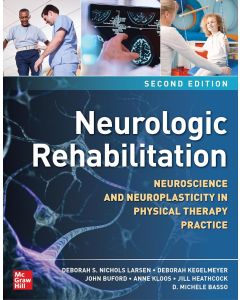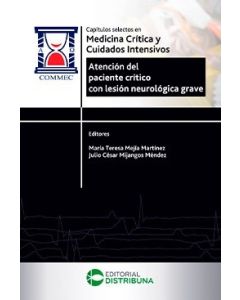Medicina
Memory Loss, Alzheimer's Disease and Dementia
Incluye Gastos de Importación
With a focus on the practical, day-to-day tools needed by neurologists, psychiatrists, geriatricians, and others who work with the elderly, Memory Loss, Alzheimer's Disease and Dementia, 3rd Edition, is an indispensable, easy-to-read resource in this growing area. Clinical experts Drs. Andrew Budson and Paul Solomon cover the essentials of physical and cognitive examinations and laboratory and imaging studies for dementia and related illnesses, giving you the guidance you need to make accurate diagnosis and treatment decisions with confidence.
Key Features
Provides in-depth coverage of clinically useful diagnostic tests and the latest research findings and treatment approaches.
Incorporates real-world case studies that facilitate the management of both common and uncommon conditions.
Contains new chapters on Alzheimer’s look-alikes and posterior cortical atrophy.
Covers key topics such as chronic traumatic encephalopathy, primary age-related tauopathy (PART) and limbic-predominant, age-related TDP-43 encephalopathy (LATE), in addition to new criteria for dementia with Lewy bodies and posterior cortical atrophy.
Includes current National Institute on Aging–Alzheimer's Association and DSM-5 criteria for Alzheimer’s disease and mild cognitive impairment.
Demonstrates how to use diagnostic tests such as the amyloid imaging scans florbetapir (Amyvid), flutemetamol (Vizamyl), and florbetaben (Neuraceq), which can display amyloid plaques in the living brains of patients, as well as the new tau scans.
Includes access to more than two dozen videos that illustrate common tests, clinical signs, and diagnostic features.
Enhanced eBook version included with purchase. Your enhanced eBook allows you to access all of the text, figures, and references from the book on a variety of devices.
-
Especialidad
- Neurología
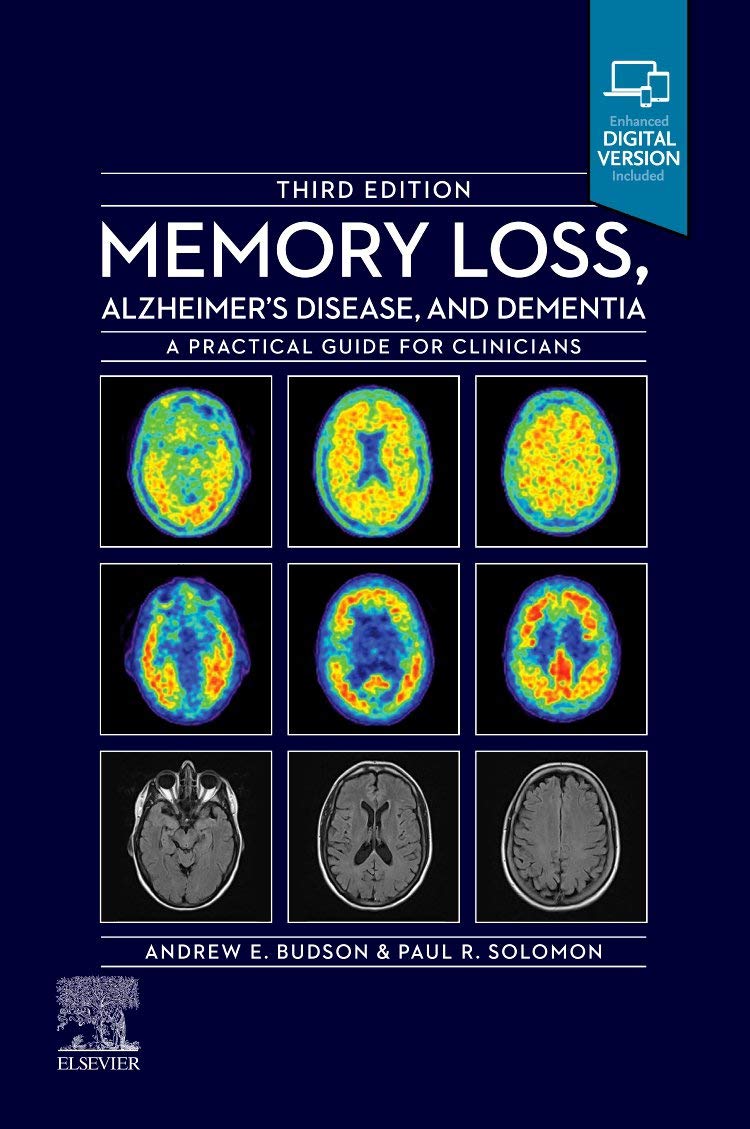
With a focus on the practical, day-to-day tools needed by neurologists, psychiatrists, geriatricians, and others who work with the elderly, Memory Loss, Alzheimer's Disease and Dementia, 3rd Edition, is an indispensable, easy-to-read resource in this growing area. Clinical experts Drs. Andrew Budson and Paul Solomon cover the essentials of physical and cognitive examinations and laboratory and imaging studies for dementia and related illnesses, giving you the guidance you need to make accurate diagnosis and treatment decisions with confidence.
Key Features
Provides in-depth coverage of clinically useful diagnostic tests and the latest research findings and treatment approaches.
Incorporates real-world case studies that facilitate the management of both common and uncommon conditions.
Contains new chapters on Alzheimer’s look-alikes and posterior cortical atrophy.
Covers key topics such as chronic traumatic encephalopathy, primary age-related tauopathy (PART) and limbic-predominant, age-related TDP-43 encephalopathy (LATE), in addition to new criteria for dementia with Lewy bodies and posterior cortical atrophy.
Includes current National Institute on Aging–Alzheimer's Association and DSM-5 criteria for Alzheimer’s disease and mild cognitive impairment.
Demonstrates how to use diagnostic tests such as the amyloid imaging scans florbetapir (Amyvid), flutemetamol (Vizamyl), and florbetaben (Neuraceq), which can display amyloid plaques in the living brains of patients, as well as the new tau scans.
Includes access to more than two dozen videos that illustrate common tests, clinical signs, and diagnostic features.
Enhanced eBook version included with purchase. Your enhanced eBook allows you to access all of the text, figures, and references from the book on a variety of devices.
- Any screen, Any time, Anywhere
- Copyright
- Praise for the First Edition
- Praise for the Second Edition
- Preface to the Third Edition
- How To Use This Book
- Acknowledgments
- Disclosures
- About the Authors
- Video Table of Contents
- Section I: Evaluating the Patient With Memory Loss or Dementia
- 1. Why Diagnose and Treat Memory Loss, Alzheimer’s Disease, and Dementia?
- Helping the Patient
- Helping the Family or Other Caregiver
- Saving Money
- Planning for the Future
- Quality Versus Quantity
- References
- 2. Evaluating the Patient With Memory Loss or Dementia
- Talking With The Family
- In the Clinic
- At the Bedside
- History
- Review of Systems
- Medical History
- Allergies to Medications
- Social History
- Family History
- Physical Examination
- Cognitive Tests and Questionnaires
- Screening in the Clinic
- Laboratory Studies
- Structural Imaging Studies
- Functional Imaging Studies
- Tests that Suggest Alzheimer’s Disease
- Summary
- References
- 3. Subjective Cognitive Decline, Mild Cognitive Impairment, and Dementia
- A Three-Step Approach
- The Spectrum of Cognitive Changes
- Is Dementia Present?
- Is Mild Cognitive Impairment Present?
- Is Subjective Cognitive Decline Present?
- Which Clinical Syndrome is Present?
- What is the Underlying Pathology?
- References
- Section II: Differential Diagnosis of Memory Loss and Dementia
- 4. Alzheimer’s Disease
- Prevalence, Prognosis, and Definition
- Alzheimer’s Pathology
- Neurochemistry
- Diagnostic Criteria
- Risk Factors, Pathology, and Pathophysiology
- Common Signs, Symptoms, and Stages
- Things to Look for in the History
- Things to Look for on the Physical and Neurological Examination
- Pattern of Impairment on Cognitive Tests
- Laboratory Studies
- Structural Imaging Studies
- Molecular and Functional Imaging Studies
- Differential Diagnosis
- Treatments
- References
- 5. Primary Age-Related Tauopathy
- Prevalence, Pathology, Genetics, and Definition
- Clinical Features, History, and Pattern of Impairment on Cognitive Tests
- Things to Look for on the Physical and Neurological Examination
- Laboratory Studies
- Structural Imaging Studies
- Functional and Molecular Imaging Studies
- Differential Diagnosis
- Treatments
- References
- 6. Limbic-predominant Age-related TDP-43 Encephalopathy
- Prevalence, Prognosis, and Definition
- Clinical Diagnosis
- Pathology, Pathophysiology, and Genetics
- Common Signs, Symptoms, and Stages
- Things to Look for in the History
- Things to Look for on the Physical and Neurological Examination
- Pattern of Impairment on Cognitive Tests
- Laboratory Studies
- Structural Imaging Studies
- Functional and Molecular Imaging Studies
- Differential Diagnosis
- Treatments
- References
- 7. Vascular Cognitive Impairment and Vascular Dementia
- Prevalence, Prognosis, and Definition
- Criteria
- Risk Factors, Pathology, and Pathophysiology
- Common Signs, Symptoms, and Stages
- Things to Look for in the History
- Things to Look for on the Physical and Neurological Examination
- Pattern of Impairment on Cognitive Tests
- Laboratory Studies
- Structural Imaging Studies
- Functional and Molecular Imaging Studies
- Differential Diagnosis
- Treatments (see also Table 7.1)
- References
- 8. Dementia With Lewy Bodies
- Prevalence, Prognosis, and Definition
- Criteria and Diagnosis
- Risk Factors, Pathology, and Pathophysiology
- Common Signs, Symptoms, and Stages
- Things to Look for in the History
- Things to Look for on the Physical and Neurological Examination
- Pattern of Impairment on Cognitive Tests
- Laboratory, Sleep, and Electroencephalography Studies
- Structural Imaging Studies
- Functional Imaging Studies
- Differential Diagnosis
- Treatments (Table 8.2)
- References
- 9. Primary Progressive Aphasia and Apraxia of Speech
- Prevalence, Definition, and Pathology
- Criteria
- Common Signs, Symptoms, and Stages (Table 9.2)
- Things to Look for in the History
- Things to Look for on the Physical and Neurological Examination
- Pattern of Impairment on Cognitive Tests
- Structural and Functional Imaging Studies
- Differential Diagnosis
- Treatments
- References
- 10. Behavioral Variant Frontotemporal Dementia
- Prevalence, Prognosis, and Definition
- Criteria
- Risk Factors, Pathology, and Pathophysiology
- Common Signs, Symptoms, and Stages (Video 10.1)
- Things to Look for in the History
- Things to Look for on the Physical and Neurological Examination
- Pattern of Impairment on Cognitive Tests
- Laboratory Studies
- Structural and Functional Imaging Studies
- Differential Diagnosis
- Treatments
- References
- 11. Posterior Cortical Atrophy
- Prevalence, Definition, and Pathology
- Criteria
- Common Signs, Symptoms, and Stages
- Things to Look for in the History
- Things to Look for on the Physical and Neurological Examination
- Pattern of Impairment on Cognitive Tests
- Structural and Functional Imaging Studies
- Differential Diagnosis
- Treatments
- References
- 12. Progressive Supranuclear Palsy
- Prevalence, Prognosis, and Definition
- Terminology
- Criteria and Diagnosis
- Risk Factors, Pathology, and Pathophysiology
- Common Signs, Symptoms, and Stages
- Things to Look for in The History
- Things to Look for on The Physical and Neurological Examination
- Pattern of Impairment on Cognitive Tests (Videos 12.6–12.8Video 12.6Video 12.7Video 12.8)
- Laboratory Studies
- Structural Imaging Studies
- Functional Imaging Studies
- Differential Diagnosis
- Treatments
- References
- 13. Corticobasal Degeneration and Corticobasal Syndrome
- Prevalence, Prognosis, and Definition
- Criteria
- Risk Factors, Pathology, and Pathophysiology
- Common Signs, Symptoms, and Stages
- Things to Look for in the History
- Things to Look for on the Physical and Neurological Examination (Videos 13.6 and 13.7)
- Pattern of Impairment on Cognitive Tests
- Laboratory Studies
- Structural Imaging Studies
- Functional and Molecular Imaging Studies
- Differential Diagnosis
- Treatments
- References
- 14. Normal Pressure Hydrocephalus
- Prevalence, Prognosis, and Definition
- Criteria
- Risk Factors, Pathology, and Pathophysiology
- Common Signs, Symptoms, and Stages
- Things to Look for in the History
- Things to Look for on the Physical and Neurological Examination
- Pattern of Impairment on Cognitive Tests
- Structural Imaging Studies
- Lumbar Puncture
- Other Studies
- Differential Diagnosis and Comorbid Disorders
- Treatments
- References
- 15. Chronic Traumatic Encephalopathy
- Prevalence, Definition, Pathology, and Pathophysiology
- Criteria
- Common Signs, Symptoms, and Stages
- Things to Look for in the History
- Things to Look for on the Physical and Neurological Examination
- Pattern of Impairment on Cognitive Tests
- Structural and Functional Imaging Studies
- Differential Diagnosis
- Treatments
- References
- 16. Creutzfeldt–Jakob Disease
- Prevalence, Prognosis, and Definition
- Criteria
- Risk Factors, Pathology, and Pathophysiology
- Clinical Presentation
- Laboratory Studies and Electroencephalography
- Structural Imaging Studies
- Differential Diagnosis
- Treatments
- References
- 17. Other Disorders That Cause Memory Loss or Dementia
- Depression and Anxiety
- Medication Side Effects
- Disrupted Sleep
- Hormones?
- Metabolic Disorders
- Diabetes
- Alcohol Abuse and Alcoholic Korsakoff’s Syndrome
- Lyme Disease
- Subdural and Epidural Hematomas
- Vitamin B12 Deficiency
- Seizures
- Human Immunodeficiency Virus–associated Neurocognitive Disorder
- Brain Sagging Syndrome
- Hashimoto’s Encephalopathy (Steroid-Responsive Encephalopathy Associated with Autoimmune Thyroiditis)
- References
- Section III: Treatment of Memory Loss, Alzheimer’s Disease, and Dementia
- 18. Goals for the Treatment of Memory Loss, Alzheimer’s Disease, and Dementia
- Talking About Treatments for Alzheimer’s Disease
- Strategies to Treat the Symptoms of Alzheimer’s Disease
- Treating Cognition and Treating Behavior
- References
- 19. Cholinesterase Inhibitors
- Cholinesterase Inhibitors In Alzheimer’s Disease
- Should I Prescribe A Cholinesterase Inhibitor?
- Is The Medication Working?
- Which Cholinesterase Inhibitor Should I Prescribe?
- What Is The Best Dose?
- When Should the Medications be Taken?
- Does it Help to Switch Medications?
- How do i Discuss with the Patient Whether the Cholinesterase Inhibitor is Working?
- Cholinesterase Inhibitors in Late-Stage Disease
- Huperzine A
- Cholinesterase Inhibitors in Other Disorders
- References
- 20. Memantine
- Mechanism of Action
- Which Patients Should Take Memantine?
- Efficacy of Memantine
- Safety and Tolerability of Memantine
- Should I Prescribe Generic Memantine or Namenda XR?
- Titrating Memantine
- Combining Memantine with Cholinesterase Inhibitors
- Memantine in the Mild Stage of Alzheimer’s Disease
- Memantine in Other Dementias
- References
- 21. Vitamins, Herbs, Supplements, and Antiinflammatories
- Vitamin D
- Vitamin E
- B Complex Vitamins: Folic Acid, B6, B12
- Ginkgo Biloba
- DHA (Fish Oil)
- Antiinflammatories
- Prevagen
- References
- 22. Nonpharmacological Treatment of Memory Loss, Alzheimer’s Disease, and Dementia
- Helpful Habits
- External Memory Aids
- Power of Pictures
- Magic of Music
- Mediterranean-Style Diets
- Social and Cognitively Stimulating Activities
- Aerobic Exercise
- References
- 23. Future Treatments of Memory Loss, Alzheimer’s Disease, and Dementia
- Strategies to Treat the Symptoms of Alzheimer’s Disease
- Disease-Modifying Treatments
- The Future of Alzheimer’s Disease Therapy
- References
- Section IV: Behavioral and Psychological Symptoms of Dementia
- 24. Evaluating the Behavioral and Psychological Symptoms of Dementia
- What Constitutes Behavioral and Psychological Symptoms of Dementia?
- The Benefits of Treating Behavioral and Psychological Symptoms of Dementia
- Measuring Behavioral and Psychological Symptoms of Dementia
- Evaluating Behavioral and Psychological Symptoms of Dementia: Pragmatic Guidelines for the Clinician
- Formulating a Treatment Plan for Behavioral and Psychological Symptoms: Pragmatic Guidelines for the Clinician
- References
- 25. Caring for and Educating the Caregiver
- Caring for the Caregiver
- Three Predictable Transition Points Where the Caregiver Needs Help
- References
- 26. Nonpharmacological Treatment of the Behavioral and Psychological Symptoms of Dementia
- Some General Principles For Treating Behavioral And Psychological Symptoms In Dementia: The 3RS
- Dealing With Specific Behavioral And Psychological Symptoms Of Dementia: Behavioral Techniques
- References
- 27. Pharmacological Treatment of the Behavioral and Psychological Symptoms of Dementia
- General Principles of Pharmacotherapy for the Behavioral and Psychological Symptoms of Dementia
- Pharmacotherapy for Depression
- Pharmacotherapy for Anxiety
- Pharmacotherapy for Pseudobulbar Affect (Pathologic Laughter and Crying)
- Pharmacotherapy for Insomnia
- Pharmacotherapy for Psychosis
- Pharmacotherapy for Agitation
- Behavioral and Psychiatric Crises
- References
- Section V: Additional Issues
- 28. Life Adjustments for Memory Loss, Alzheimer’s Disease, and Dementia
- Mild Cognitive Impairment and Alzheimer’s Disease Dementia In the Very Mild and Mild Stages
- Alzheimer’s Disease Dementia in the Moderate to Severe Stages
- References
- 29. Legal and Financial Issues in Memory Loss, Alzheimer’s Disease, and Dementia
- Legal Planning
- Financial Planning
- 30. Special Issues in Memory Loss, Alzheimer’s Disease, and Dementia
- The Patient Who Does Not Want to Come to the Appointment
- The Patient Who Does Not Want You to Talk to Their Family
- Talking to Adult Children of Patients about Their Risk of Alzheimer’s Disease And What they can do About it
- References
- Appendix A. Cognitive Test and Questionnaire Forms, Instructions, and Normative Data for Evaluating Memory Loss, Alzheimer’s Disease, and Dementia
- Mental Status Tests
- Screening Instruments that Combine Single Tests
- Informant (Caregiver)-Completed Screening Questionnaires
- Appendix B. Screening for Memory Loss, Alzheimer’s Disease, and Dementia
- To Screen or Not to Screen?
- Screening in Primary Care Practice
- Appendix C. Memory Dysfunction in Alzheimer’s Disease and Other Causes of Mild Cognitive Impairment and Dementia
- Episodic Memory
- Semantic Memory
- Procedural Memory
- Working Memory
- Concluding Comment
- Index
Escribir Su propia reseña


